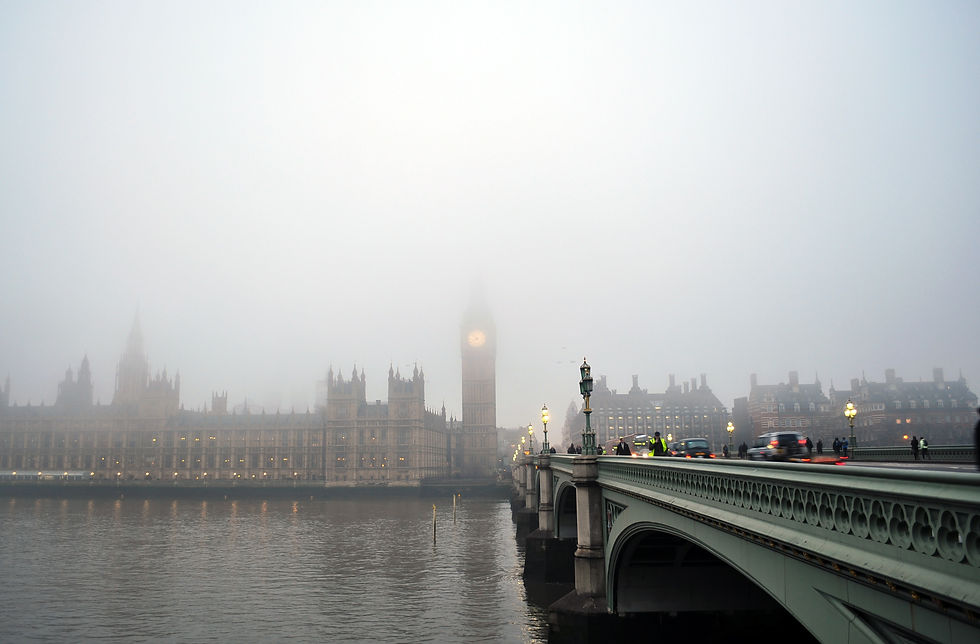The decade-long inside story behind an onshore wind revival
- Maf Smith
- Mar 3, 2020
- 4 min read
Yesterday the UK Government opened the door again to onshore wind, marking a further shift in Conservative attitudes to this important low carbon technology. Since the Conservative’s 2015 Manifesto onshore wind has been persona non-grata in UK energy policy, with no support through (English) planning, and no prospect of subsidy for onshore wind through Government’s successful contract for difference mechanism.

As the party of Government for the last decade, Conservative views on energy have been critical to how we decarbonise. So being part of this discussion and talking to talking to an evolving group of Conservative MPs and Ministers about onshore wind and renewables has been a big part of my work for many years now. I remember meeting with David Cameron at Scottish Conservative Conference soon after he won the party leadership. I was head of Scottish Renewables and he wanted to know more about our work and renewables in Scotland. After I’d given him a brief introduction he asked, “but not just onshore wind right?”
In the early 2000s Labour was backing renewables, and signing the UK up to stretching renewable energy targets. The Conservatives wanted to be seen as more ambitious. At the 2010 election the Conservatives attacked Labour’s “failure” on climate change. Their manifesto enthused that Britain was “uniquely placed to be the world’s first low carbon economy: we have the natural resources to generate wind and wave power.”
However, support for renewable energy led to rapid growth of onshore wind farms. It was the most cost-effective source of power, and easy to scale. Onshore schemes grew in number, and grassroots voices within the Party began to push back. The planning system became more adversarial, and planning committees began to ignore local and national polices, creating a situation in which more and more onshore wind farms gained permission through planning appeals, not council decisions. It became a David and Goliath tale of utilities against plucky set up communities. There was only one way that would end.
In Government, the Conservative position shifted rapidly, famously moving from hug a huskie in 2006 to “get rid of the green crap” by 2013. Onshore wind had become a huge dividing line inside the Conservative-Lib Dem Coalition Government, and as the chief lobbyist for RenewableUK I was spending most of my time in meetings with Conservative backbenchers fully signed up to the worst anti-wind myths campaigners could summon up. Cameron replaced the respected Charles Hendry with John Hayes in an attempt to keep Chris Huhne and Ed Davey on a tight leash. Hayes railed against renewables and promised to put the “coal back into coalition”. Finally Eric Pickles, as the Secretary of State responsible for planning, called in a succession of English onshore wind projects and found a way to bring the unwanted onshore wind pipeline to a halt.
At the 2015 election, the Conservatives unexpectedly formed a majority and were suddenly free to implement their manifesto commitment to “halt the spread of subsidised onshore wind farms”. The UK’s onshore wind sector was brought to its knees, with thousands of job losses as a direct result of Government policy.
Inside RenewableUK, industry and green NGOs, work began to change minds. I remember briefing an NGO Head in autumn 2015 about industry’s lobbying and engagement plan. I didn’t think though it would be five years in the delivery. Hugh McNeal brought wise words and some sharp home truths when he joined RenewableUK as CEO in 2016. He stepped up efforts to change the conversation, signaling early in a Telegraph interview that any future onshore wind would not be in England. The 2017 Conservative Manifesto followed this line saying that “we do not believe that more large-scale onshore wind power is right for England”, creating an opening for policy allowing development in Scotland and Wales. But none came.
Work continued to secure backing of a growing number of Conservative backbenchers for onshore wind. A powerful body of evidence showcased polling support for onshore wind among Conservative voters. Economic analysis showed that subsidy was not required, but that auctions could be used to provide market stability, while paying money back to consumers. Most recently, industry showed that net zero commitments could not be delivered without onshore wind.
In the year of COP26 we have an acceptance from Government that delivering net zero means supporting onshore wind. The new consultation on future auctions acknowledges that without future auctions “we may not see the rate and scale of new projects needed in the near-term to support decarbonisation of the power sector and meet the net zero commitment at low cost.”
This week’s policy change means Government can fast track action on decarbonisation while reducing consumer bills, and be confident that the auction processes will mean new schemes are in lowest cost sites in Scotland and Wales, so the chances of ruffling older feathers in Conservative associations are minimised.
It looks like a policy win-win for this politically aware Government. Conservative policy was becoming increasingly untenable, but enough time has now passed to justify a change. Onshore wind, alongside offshore wind and solar, is set to dominate power generation across the globe thanks to simple market economics as much as the need to address climate change.
The new Government has accepted this realpolitik, going with the market and deciding to steer a more intelligent course. A more mature and wiser industry can hopefully focus on with building a new generation of onshore wind farms that deliver carbon reduction, new jobs and low-cost power to the voters who have continued to back us all these years.



Comments